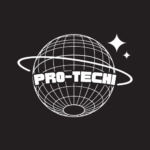I. Introduction
Data management and storage are critical focal points for any firm, even in the tangle of complications that IT teams navigate on a regular basis. When it comes to protecting important data, granular recovery technology is a refined option. This extensive paper will examine the fundamentals of granular recovery technology, its benefits over conventional approaches, and its significant influence on disaster recovery and compliance adherence. As we dissect this sophisticated procedure, we’ll reveal its many real-world uses in a range of sectors, recognize any possible obstacles, and provide best practices for execution.
II. Granular Recovery vs. Traditional Backup
Understanding the distinctions between granular recovery and traditional backup strategies is vital. Traditional backup often involves storing an entire system or database, which, while essential, can be time-consuming and resource-heavy when only specific items need restoration. Granular recovery, in contrast, pinpoints and restores data at a far more detailed level be it an email, a document, or an entire directory without the need to retrieve entire datasets.
Advantages of Granular Recovery:
- Speedy restoration of individual items
- Reduced storage space requirements since only necessary data is recovered
- Increased efficiency in managing and accessing critical data
Limitations of Traditional Backup:
- Longer recovery times since entire data sets may require restoration
- Greater storage requirements to maintain full backups
- Potential for increased downtime, impacting business continuity
These differences underline the necessity for a dynamic and nuanced approach to data recovery, one that granular recovery technology aptly provides.
III. Granular Recovery Technology: How It Works
Granular recovery operates through sophisticated software capable of identifying and extracting the exact pieces of data needed for restoration. This intricate process involves indexing data at a granular level, which then allows for swift and precise recovery efforts.
Components and Features:
- Advanced indexing mechanisms that catalog data granularly
- The ability to restore data directly to the source or a redirection point
- Support for multiple applications and file types
Illustrated by real-world scenarios, the power of granular recovery technology is particularly evident. For example, a financial institution facing a ransomware attack could utilize granular recovery to restore only the impacted transactional data, thereby preserving integral operations and abiding by financial regulations.
IV. Significance of Granular Recovery in Data Loss Prevention and Disaster Recovery
Granular recovery stands as a bulwark against data loss and forms a critical component of contemporary disaster recovery plans. By ensuring that vital data can be quickly and accurately restored, businesses can reduce the impact of data breaches, system failures, and other unforeseen catastrophes.
Case Studies:
- A healthcare provider leveraged granular recovery to restore precise patient records, substantially minimizing service interruptions and upholding HIPAA standards.
- An e-commerce business recuperated specific product information post-deletion, thereby maintaining customer service levels and sales conduits.
In such instances, granular recovery not only mitigates the consequences of data loss but also acts as a key ingredient in disaster recovery strategies, ensuring organizational resilience.
V. Granular Recovery in Compliance and Data Governance
Amidst tightening regulations and growing privacy concerns, granular recovery technology offers much-needed support by ensuring that companies can meet compliance requirements without a hitch. This precision-based technology facilitates the controlled and compliant restoration of data, thus aiding in systematic data governance and regulatory adherence.
For instance, a multinational firm can maintain communication efficacy by promptly retrieving lost emails, meeting both internal standards and external communication regulations. Or take a government agency that integrates granular recovery to manage sensitive documents efficiently, thereby fulfilling statutory data retention policies.
VI. Challenges and Best Practices
While granular recovery technology offers significant advantages, it’s not without its challenges. Concerns like performance impacts during backup processes, scalability issues as data volumes grow, and the complexity of implementation need careful consideration. To mitigate these challenges, organizations should follow best practices:
- Regular testing of recovery processes to ensure readiness
- Setting clear data management policies to identify what requires granular recovery
- Ensuring the granular recovery solution scales efficiently with the growth of data
Adopting these practices ensures that granular recovery technology functions not as a mere utility but as a strategic advantage in the business’s data management arsenal.
VII. The Future of Granular Recovery Technology
Looking ahead, granular recovery technology is poised to become even more intricate and sophisticated. Developments in artificial intelligence and machine learning may further enhance the precision and speed of data restoration, predict potential data loss events, and automatically initiate protective measures.
The adoption rates are projected to increase as businesses seek more refined control over their data. Such advancements could profoundly influence data management strategies, pushing the boundaries of what is currently possible in the field.
Conclusion
The adage “the devil is in the details” rings particularly true with data management. Granular recovery technology affords organizations the level of control necessary to not just survive but thrive in an environment where data is as valuable as currency. Through safeguarding crucial data, ensuring compliance, and enabling robust disaster recovery practices, granular recovery technology stands out as a guardian of the digital era’s most precious asset—information.




